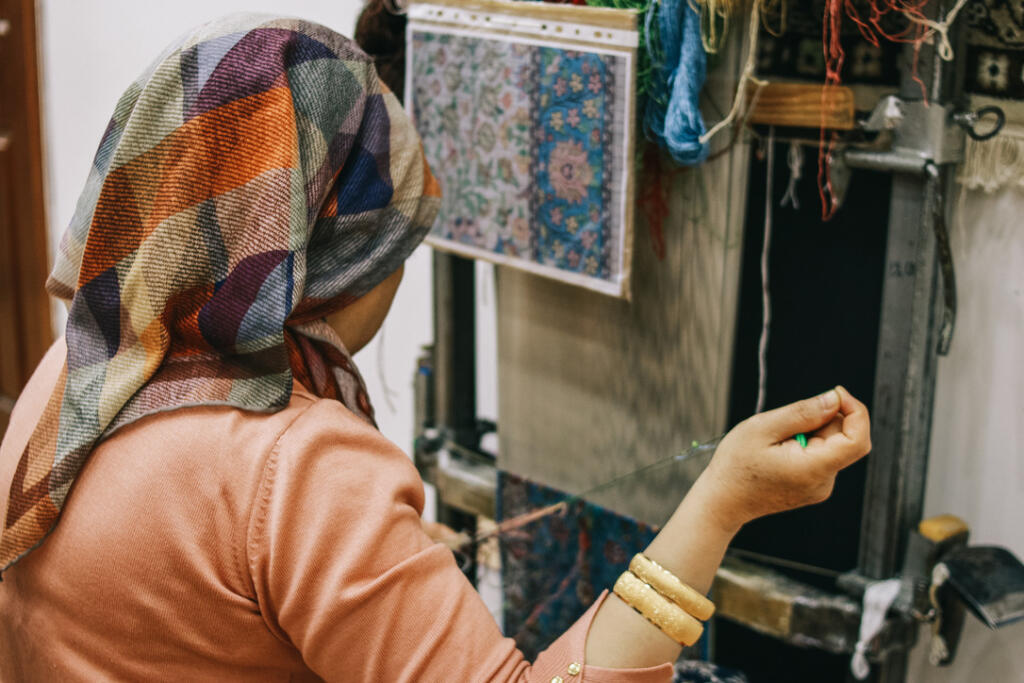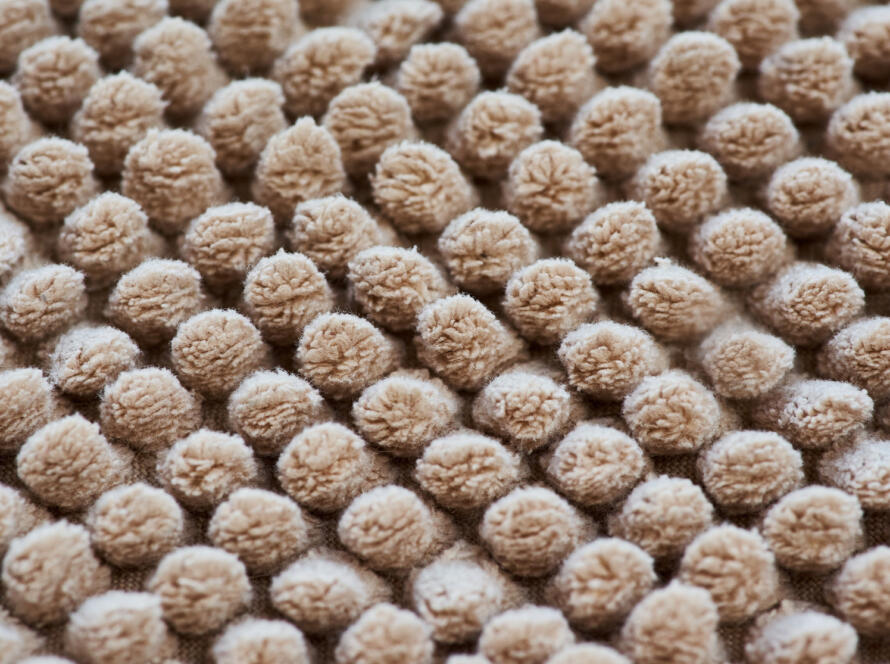Hand-knotted rugs are known for their beauty, durability, and intricate craftsmanship. These rugs often come with a high price tag, which can leave people wondering why they are so expensive. The answer lies in the artistry, time, materials, and cultural heritage that go into making each one. This article will explore the factors that contribute to the cost of hand-knotted rugs and help you understand why investing in one can be worth it.
The Art of Hand-Knotting
The process of hand-knotting rugs is an ancient art, requiring extraordinary skill. Every rug is made entirely by hand, with each knot being tied individually. This method is labor-intensive and demands a high level of precision.
- Manual Crafting: Each knot is created one by one, with skilled artisans spending hours each day tying thousands of knots.
- Knot Density: A key measure of quality is knots per square inch (KPSI). Higher KPSI means more detailed patterns but also increases the production time and cost.
This type of craftsmanship is exactly what Shivalika Rugs specializes in, where each piece is a work of art that can take months or even years to complete.
Factors Affecting the Price of Rugs
The Time-Consuming Process
Hand-knotted rugs take significantly longer to make compared to machine-made ones. This long production time adds to the expense.
- Months to Years: A medium-sized rug can take several months to a year, depending on its complexity. Larger rugs may take even longer.
- Seasonal Factors: Weather conditions in regions like India can affect production speed.
The extended time required for each rug is a major factor in its final price, but this careful, thoughtful process ensures a rug that can last for decades.

The Expertise of the Weavers
The people behind these rugs are not just workers; they are artisans. Many have spent years perfecting their craft, making their skills invaluable.
Generations of Skill
In many cases, rug-weaving techniques have been passed down for generations. Weavers learn from their elders, absorbing both traditional techniques and modern innovations. This blend of old and new knowledge is central to companies like Shivalika Rugs, where heritage craftsmanship meets contemporary design.
Master Weavers
Some artisans reach the level of “master weaver,” an accolade that signifies an exceptional degree of skill. Rugs made by these weavers are particularly intricate and command even higher prices. Master weavers are rare, and their work is often considered fine art, further adding to the value of a hand-knotted rug.
Quality of Materials
The materials used to create hand-knotted rugs are another key factor in their cost. High-quality natural fibers are often used, which enhances both the durability and beauty of the rug.
Wool and Silk
Most hand-knotted rugs are made from wool or silk. Wool is a durable material that is also easy to clean, making it a popular choice for everyday use. Silk is more delicate but adds an element of luxury and shine to a rug. Some of the finest rugs, such as those offered by Shivalika Rugs, use a blend of both wool and silk to create a soft yet durable texture.
- Wool: Known for its strength and resilience, wool is ideal for rugs that see heavy foot traffic.
- Silk: Silk adds elegance and shine, but it is more fragile and expensive. The combination of these two materials results in a rug that is both beautiful and functional.
Natural Dyes
Many hand-knotted rugs are dyed using natural pigments, which are often derived from plants, minerals, or insects. These dyes are more labor-intensive to produce and add to the uniqueness of each rug. The color variations achieved through natural dyes age gracefully, enhancing the rug’s appearance over time.
Cultural and Historical Significance
Hand-knotted rugs are more than just home decor. They represent a rich cultural heritage, with designs and techniques passed down through centuries.
A Piece of History
In regions like Persia and India, where rug-making is a longstanding tradition, each rug carries the essence of its place of origin. The patterns and techniques used often have historical or cultural significance, making the rug more than just an accessory—it becomes a piece of history.
Every rug is a celebration of this heritage, combining traditional designs with the highest quality materials to produce something that is as meaningful as it is beautiful.
Global Demand and Limited Supply
Because hand-knotted rugs are rooted in cultural history, demand is high. Many are collectors’ items, further driving up their price. At the same time, the supply of hand-knotted rugs is limited due to the specialized skills required. This balance between supply and demand naturally pushes up the price, particularly for unique pieces.
Customization and Unique Designs
One of the most appealing aspects of hand-knotted rugs is their uniqueness. No two rugs are exactly alike, giving each piece a distinct character.
One-of-a-Kind Designs
Hand-knotted rugs often feature complex patterns that are designed by the weavers themselves. These designs can range from traditional motifs to modern interpretations, offering buyers a wide range of styles. Since each rug is handcrafted, the patterns and color schemes are never replicated exactly, ensuring that every rug is unique.
Bespoke Rugs
Many hand-knotted rugs are customized to suit the buyer’s personal preferences. Bespoke rugs, such as those offered by Shivalika Rugs, allow for complete personalization, from the color and design to the size and material. The ability to order a custom-made rug adds to the exclusivity and, by extension, the price of the rug.
Durability and Longevity
When investing in a hand-knotted rug, you’re also investing in longevity. These rugs are built to last and are often passed down from generation to generation.
- Built to Last: Thanks to the meticulous knotting process and quality materials, hand-knotted rugs can last for decades, even centuries, with proper care.
- Aging Gracefully: Unlike machine-made rugs that may degrade over time, hand-knotted rugs often become more beautiful as they age. Colors soften, patterns become richer, and the rug takes on a patina that adds to its charm.
Many buyers, particularly view these rugs as heirloom pieces, making them a long-term investment that is well worth the initial cost.
Transportation and Import Costs
Since most hand-knotted rugs are produced in countries like Iran, India, and Turkey, transportation and import fees can also contribute to their high cost.
Shipping large, heavy rugs from remote regions is a costly affair. Rugs often have to be transported by truck or air to reach international buyers. The cost of shipping, along with the careful handling required to preserve the rug’s quality, adds to the final price.
Environmental and Ethical Considerations
Hand-knotted rugs often come with a reduced environmental footprint compared to synthetic, machine-made options.
Many companies use sustainable, natural fibers like wool and silk, as well as natural dyes. This not only ensures that the rugs are environmentally friendly but also enhances their appeal to eco-conscious buyers.
Conclusion
Hand-knotted rugs are expensive due to the exceptional craftsmanship, time, materials, and cultural heritage that go into creating each piece. From the intricate hand-knotting process to the quality of the wool and silk, these rugs are more than just floor coverings—they are works of art. Companies like Shivalika Rugs have mastered the art of producing high-quality, unique rugs that are as durable as they are beautiful, making them a worthwhile investmen




